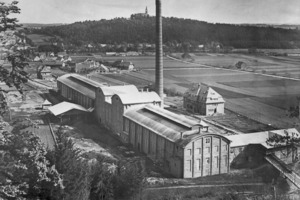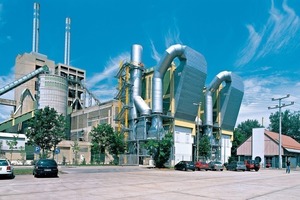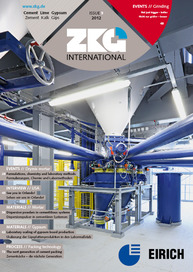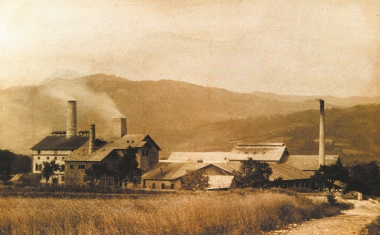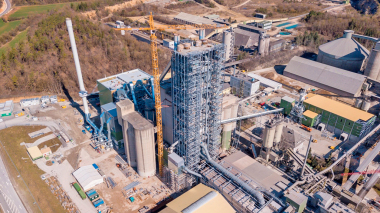100th anniversary at Burglengenfeld cement plant
In 1912 the Portland-Cementwerk Burglengenfeld Aktiengesellschaft was registered in Regensburg and in the same year they started to set up the factory following the example of the Leimen cement plant. At that time today’s HeidelbergCement did business under the name Portland-Cementwerke Heidelberg-Mannheim-Stuttgart AG with headquarters in Heidelberg. Initially the company only participated in the Burglengenfeld plant on a prorata basis but gradually they bought up the shares and finally took over the entire plant in 1948. Contrary to the hopes of the founders, cement production in Burglengenfeld developed only slowly until World War I. So that, for the first time in 1934, the staff could be given employment all year round. At that time about 100 000 t of cement were produced per year. The increased demand for cement after World War II led to a continuous expansion of the plant, which has been able to maintain its position until today despite the changing economic developments. Today more than one million of tons of cement are produced by the plant. “In retrospect one can say that sales have developed very positively since World War II,” said Andreas Kern on the occasion of the 100-year anniversary. In 2003 the plant even achieved record sales of 1.37 million t despite difficult market conditions. The previous year 2011 was also excellent with 1.275 million t. 10 types of cement are produced, e.g. CEM I 52,5 R for precast units and wind power plants of the latest generation. Expansion and capacity enhancement were always accompanied by adaptation to the corresponding state-of-the-art, also as regards environmental protection. Wilhelm Lotz said in his opening speech: “Even though the main plants were installed some time ago, they have been maintained well and optimized and streamlined again and again with minor and major capital spending (Fig. 2). In particular this applies to environmental protection. New filters, modern plant components and optimized processes ensure compliance with the emission standards or even that the emissions are in part considerably below the prescribed limits. To a great extent this will also be the case in future. The raw materials will last for more than 35 years. Nevertheless, it is necessary to make sure at the right time that further limestone and clay reserves are available.” “I am certain that future investment decisions will also be made for the excellent location Burglengenfeld. This has been impressively demonstrated by the plant’s history for the past 100 years,” concluded plant manager Lotz and he wished the plant continued successful development in the future.

